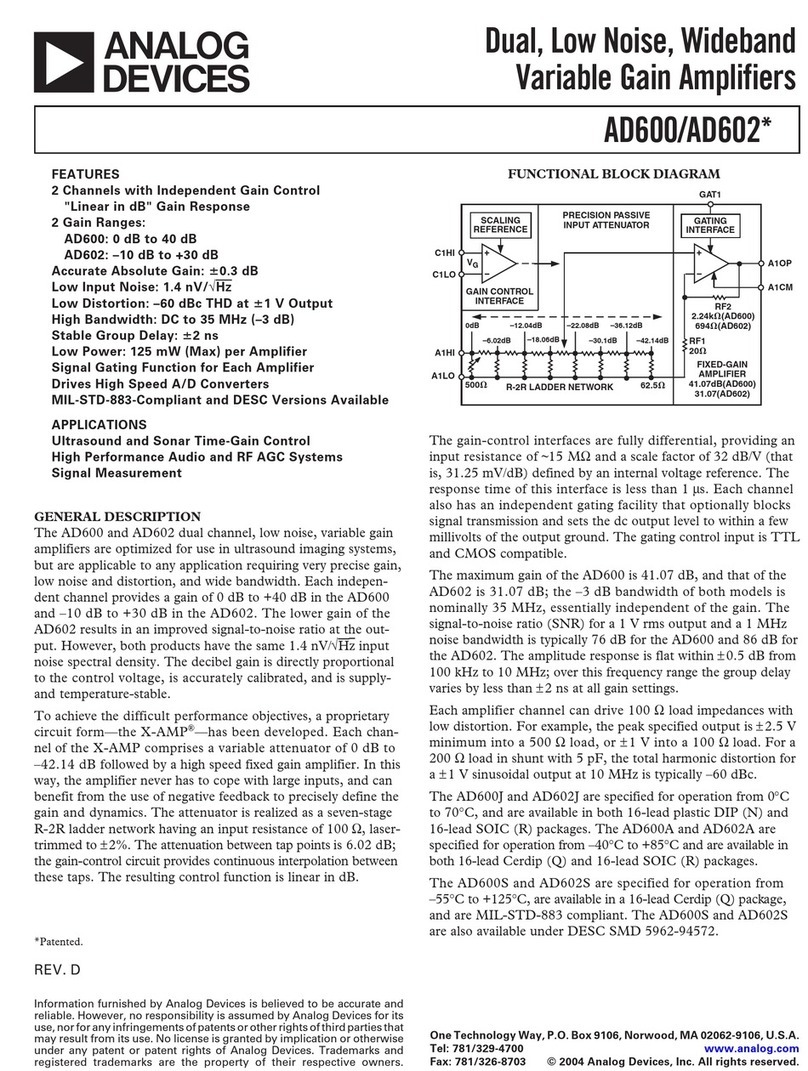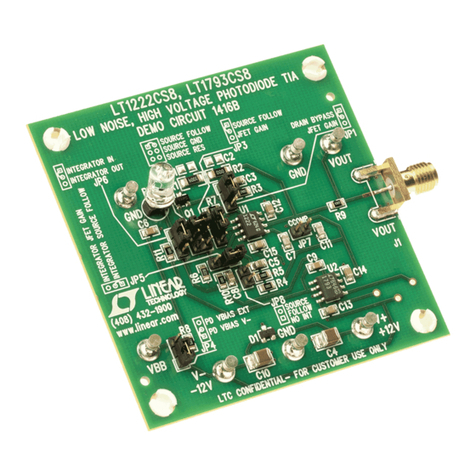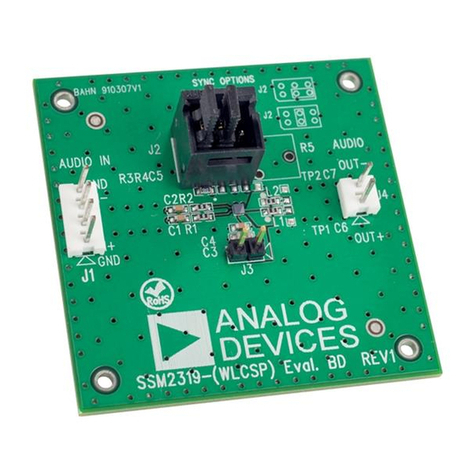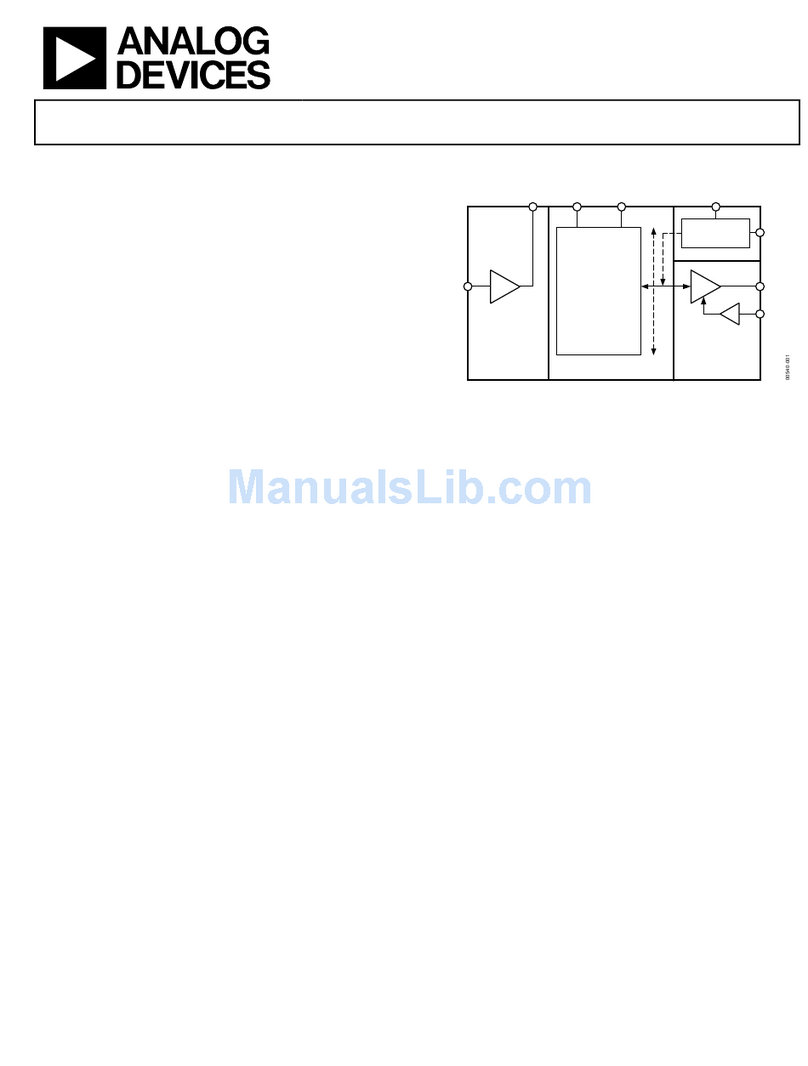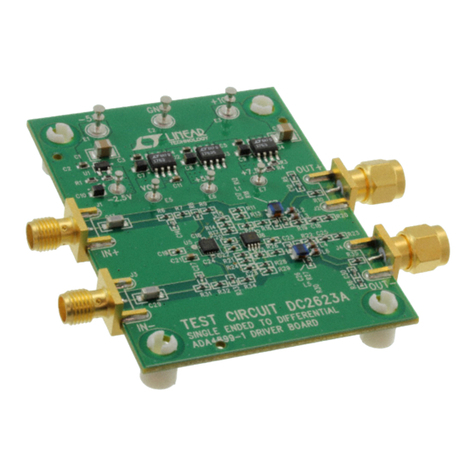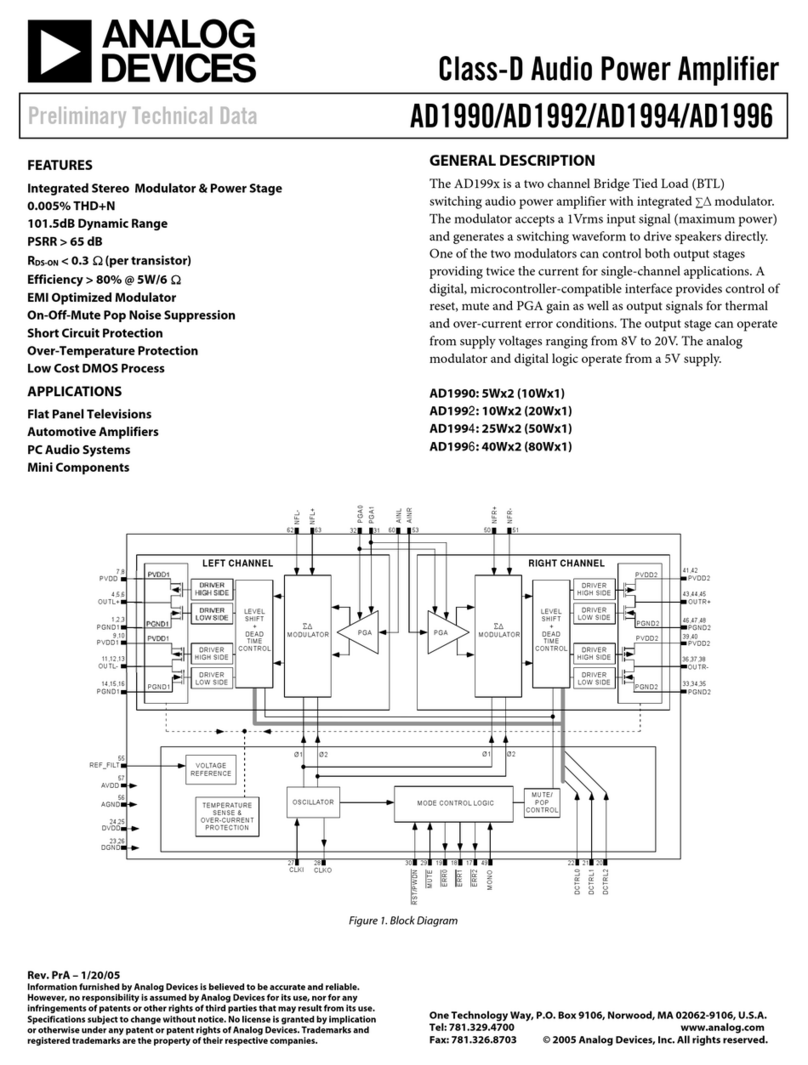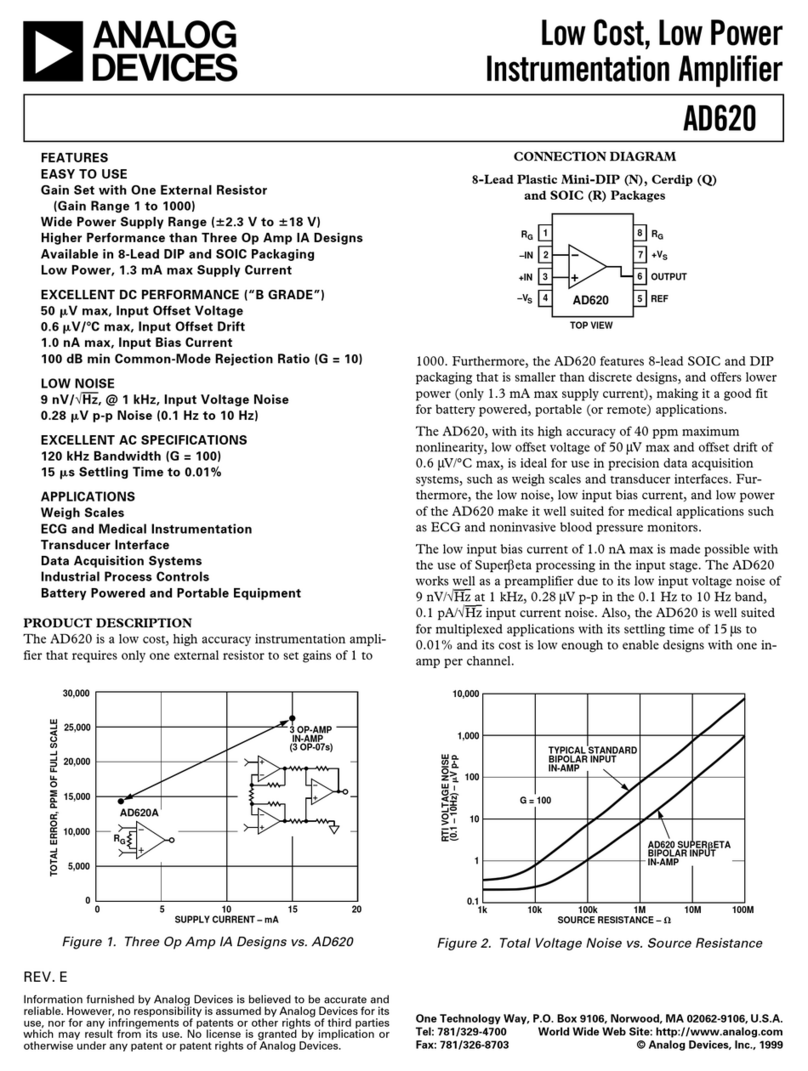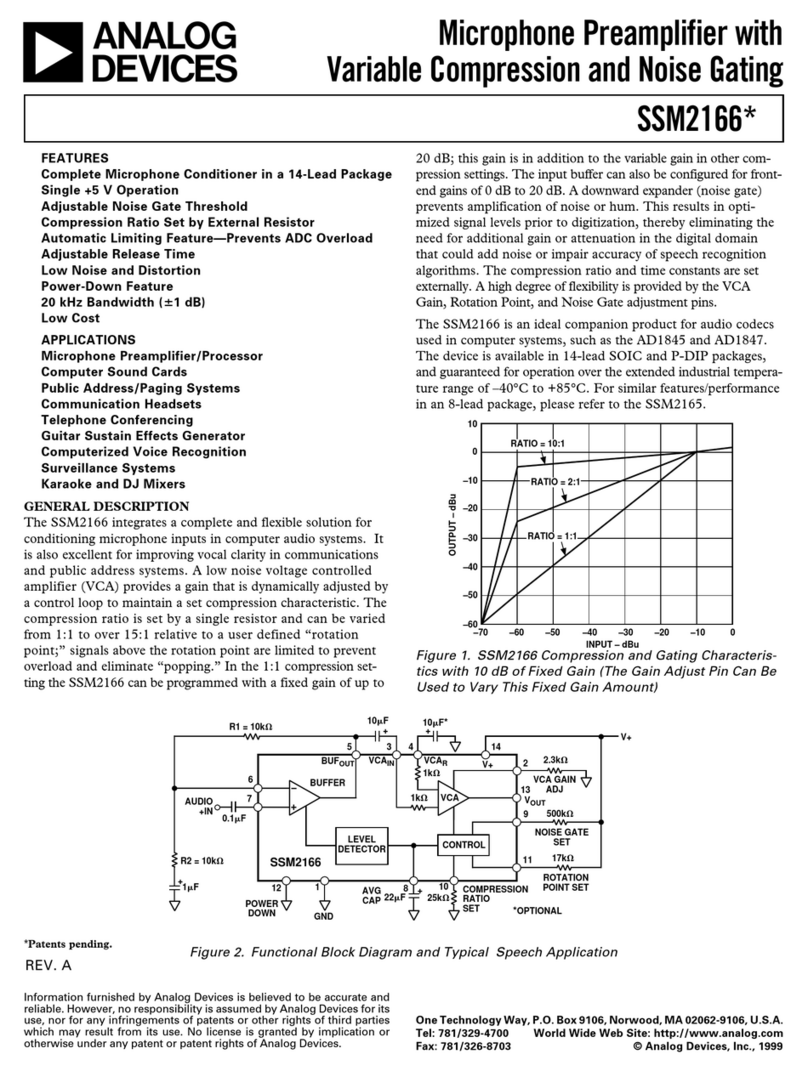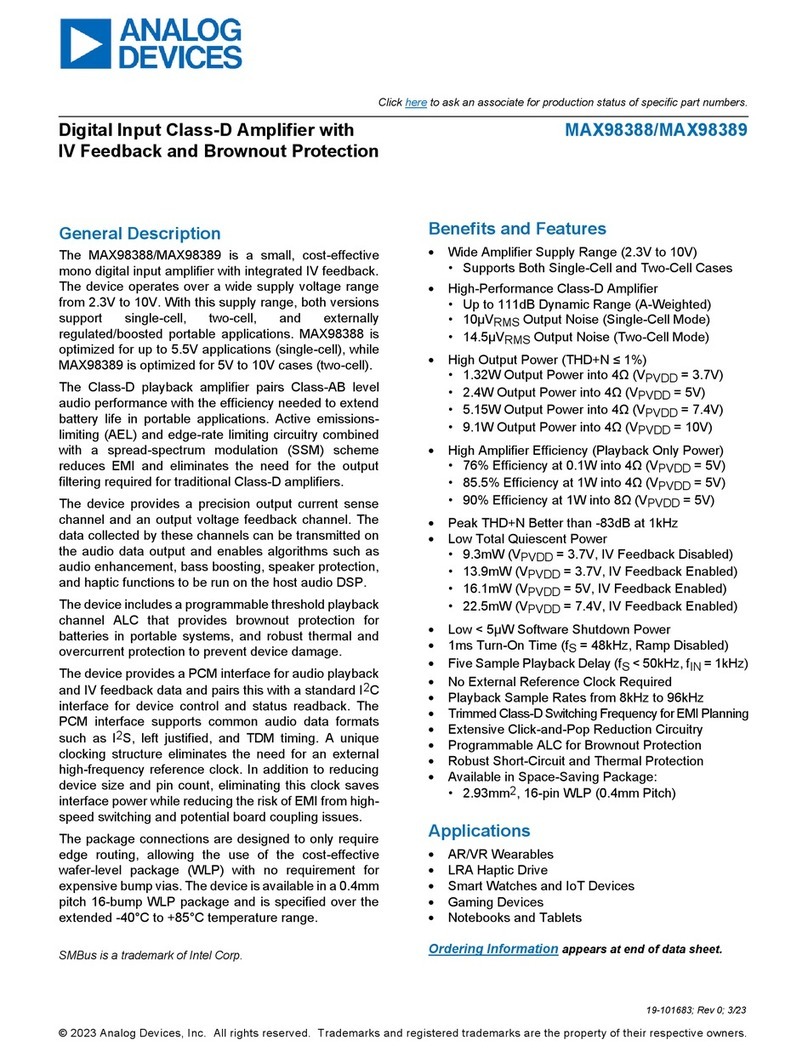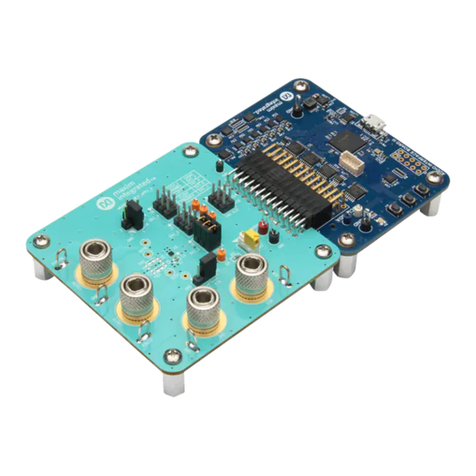Rev. C | Page 2 of 24
TABLE OF CONTENTS
Features .............................................................................................. 1
Applications....................................................................................... 1
General Description ......................................................................... 1
Connection Diagram ....................................................................... 1
Revision History ............................................................................... 2
Specifications..................................................................................... 3
Absolute Maximum Ratings............................................................ 8
Thermal Characteristics .............................................................. 8
ESD Caution.................................................................................. 8
Pin Configuration and Function Descriptions............................. 9
Typical Performance Characteristics ........................................... 10
Theory of Operation ...................................................................... 17
Gain Selection ............................................................................. 18
Layout .......................................................................................... 18
Reference Terminal .................................................................... 19
Power Supply Regulation and Bypassing ................................ 19
Input Bias Current Return Path ............................................... 19
Input Protection ......................................................................... 19
RF Interference ........................................................................... 20
Precision Strain Gage................................................................. 20
Conditioning ±10 V Signals for a +5 V Differential Input
ADC ............................................................................................. 20
AC-Coupled Instrumentation Amplifier................................ 21
Die Information.............................................................................. 22
Outline Dimensions....................................................................... 23
Ordering Guide .......................................................................... 24
REVISION HISTORY
3/11—Rev. B to Rev. C
Added Pin Configuration and Function Descriptions Section.. 9
Added Die Information Section ................................................... 22
Updated Outline Dimensions....................................................... 23
Changes to Ordering Guide .......................................................... 24
9/07—Rev. A to Rev. B
Changes to Features.......................................................................... 1
Changes to Table 1 Layout............................................................... 3
Changes to Table 2 Layout............................................................... 5
Changes to Figure 15...................................................................... 11
Changes to Figures 32 .................................................................... 13
Changes to Figure 33, Figure 34, and Figure 35......................... 14
Updated Outline Dimensions....................................................... 21
Changes to Ordering Guide .......................................................... 22
11/03—Rev. 0 to Rev. A
Changes to Features.......................................................................... 1
Changes to Specifications Section.................................................. 4
Changes to Theory of Operation Section.................................... 13
Changes to Gain Selection Section............................................... 14
10/03—Revision 0: Initial Version
